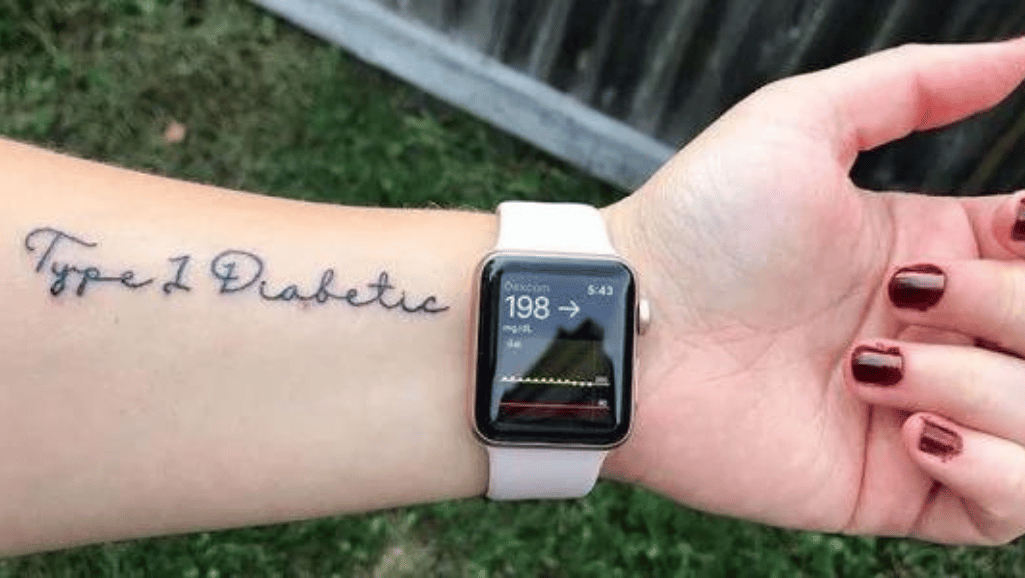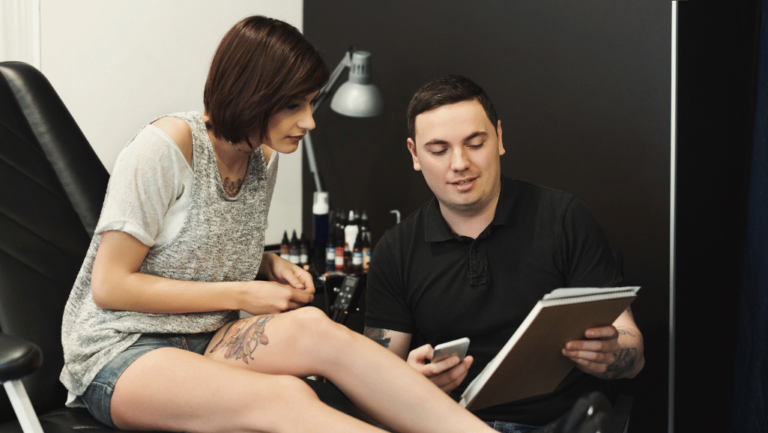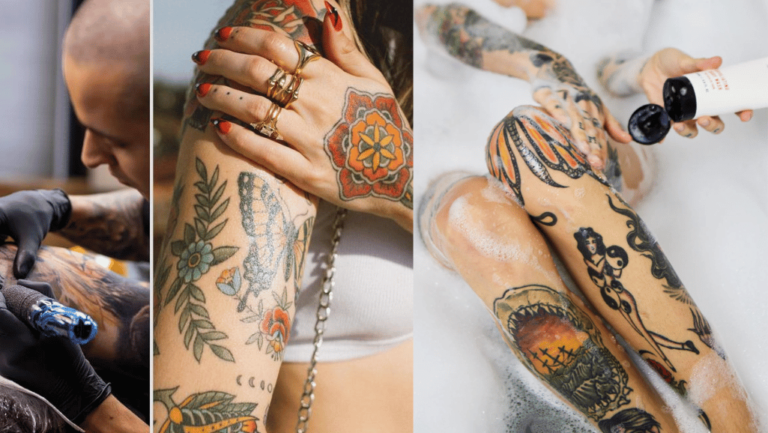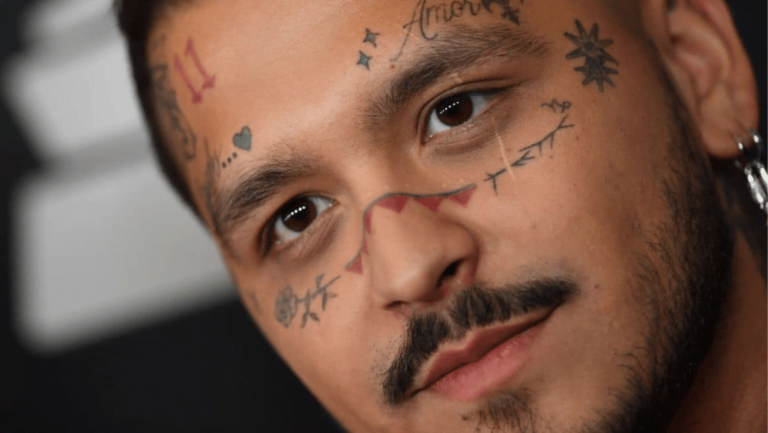Can diabetics get a tattoo? This is a question that many individuals with diabetes may have when considering body art. While getting a tattoo is possible for diabetics, there are important safety considerations to keep in mind. Managing blood sugar levels and choosing the right tattoo placement are crucial for a successful and safe experience.
Diabetes tattoo risks include prolonged healing times and an increased risk of infection if blood sugar levels are not well-controlled. Therefore, it is essential for individuals with diabetes to ensure that their blood sugar levels are stable before getting a tattoo. This will help promote proper healing and reduce the risk of complications.
When considering a tattoo, diabetic tattoo considerations should include the location of the tattoo. Certain areas of the body with poor circulation, such as the feet and shins, should be avoided. These areas may take longer to heal and pose a higher risk of infection. It is recommended to choose a tattoo placement that is easily accessible for monitoring and quick detection of any signs of infection.
Choosing a reputable and hygienic tattoo studio is also crucial for diabetics. Diabetic-friendly tattoo studios prioritize cleanliness and follow strict hygienic practices. They use new and sterile needles to minimize the risk of infections. It is important to ask for recommendations or read online reviews to find a safe and professional studio.
After getting a tattoo, proper aftercare is essential for diabetic tattoo healing process. Keeping the tattoo clean and covered, following the tattoo artist’s instructions, and monitoring blood sugar levels are necessary steps to avoid complications and ensure successful healing.
Overall, diabetics can get tattoos as long as they take the necessary precautions. By managing blood sugar levels, choosing a safe tattoo studio, and following proper aftercare, individuals with diabetes can enjoy body art while minimizing the risks involved.
Key Takeaways:
- Diabetics can get tattoos, but blood sugar levels should be well-controlled for proper healing.
- Certain tattoo placements, such as the feet and shins, should be avoided due to poor circulation.
- Choosing a reputable and hygienic tattoo studio is crucial for minimizing the risk of infections.
- Proper aftercare, including keeping the tattoo clean and monitoring blood sugar levels, is essential for successful healing.
- Some diabetics opt for medical tattoos to serve as a form of identification in emergencies.
Blood Sugar Control and Tattoo Healing
For individuals with diabetes who are considering getting a tattoo, managing blood sugar levels is crucial for a successful healing process. Proper blood sugar control not only promotes healing but also reduces the risk of infection, ensuring the best outcome for your tattoo.
High blood sugar levels can negatively impact the healing process and increase the likelihood of complications. Elevated blood sugar can impair the body’s immune response, making it harder for wounds to heal and increasing the risk of infections. Additionally, high blood sugar levels can cause excessive dryness and itching around the tattoo, leading to discomfort and potential damage to the artwork.
When planning your tattoo session, it is essential to monitor your blood sugar levels regularly, especially during longer tattoo sessions. Long tattoo sessions can be physically demanding and may require breaks to stabilize blood sugar levels and prevent any adverse reactions.
After getting a tattoo, proper aftercare is vital to ensure optimal healing. It is important to keep the tattooed area clean and follow any specific instructions provided by your tattoo artist. This includes gently washing the tattoo with a mild, fragrance-free soap and applying a thin layer of approved aftercare ointment to keep the area moisturized and protected.
As part of your diabetic tattoo healing process, it is also recommended to maintain a balanced diet and stay well-hydrated. Eating nutrient-rich foods can support the healing process and enhance your body’s ability to recover. Staying hydrated helps maintain skin elasticity and overall skin health.
It is important to remember that everyone’s healing process may vary. Diabetic individuals should closely monitor their blood sugar levels during the healing period and promptly seek medical attention if any signs of infection, such as increased redness, swelling, or pus, occur.
Tips for Blood Sugar Control During Tattoo Sessions:
- Ensure your blood sugar levels are in the target range before the tattoo session.
- Monitor your blood sugar levels regularly during longer tattoo sessions.
- Take breaks as needed to stabilize blood sugar levels and prevent any adverse reactions.
- Pack diabetic-friendly snacks and drinks to maintain stable blood sugar levels.
By maintaining good blood sugar control and following proper aftercare, individuals with diabetes can enjoy their tattoos while minimizing potential risks and enhancing the overall healing process.
Choosing the Right Tattoo Placement
When deciding on a tattoo placement, diabetics should consider certain factors. It is important to avoid areas where insulin injections are administered, such as the abdomen and thighs. These areas need to be easily accessible for monitoring and to quickly detect any signs of infection. Locations with poor circulation, like the feet, shins, ankles, and buttocks, should also be avoided as they can impede proper healing.
Diabetics should choose tattoo placements that prioritize accessibility and minimize the risk of infection. Avoiding areas where insulin injections are administered, such as the abdomen and thighs, is crucial for maintaining proper medical care. These areas require easy access for monitoring and quick detection of any complications.
Additionally, locations with poor circulation, such as the feet, shins, ankles, and buttocks, should be avoided. Poor blood flow can impede the healing process of tattoos and increase the risk of complications. Opting for areas with good circulation, such as the arms, upper back, or calves, can help ensure proper healing and reduce the chances of infection.
When considering tattoo placement, it is also essential to think about the future. As diabetics grow older, their bodies may change, and certain areas may become difficult to access or maintain. It is advisable to choose tattoo placements that will remain easily manageable and visible even as the body undergoes natural aging processes.
Selecting a Safe and Hygienic Tattoo Studio
When it comes to getting a tattoo, selecting the right studio is essential for diabetics to minimize the risk of infections and other complications. Diabetic-friendly tattoo studios prioritize cleanliness and follow strict hygienic practices.
One of the key considerations when choosing a tattoo studio is ensuring they use new and sterile needles for each client. This practice helps reduce the risk of infections and ensures a safe tattooing experience for diabetics.
It is also recommended to ask for recommendations from friends, family, or healthcare professionals who are familiar with diabetic-friendly tattoo studios. Reading online reviews can also provide valuable insights into the studio’s reputation and safety practices.
Unclean equipment can lead to infections and other illnesses, which can be particularly detrimental for individuals with diabetes. By selecting a studio that follows proper safety protocols, diabetics can enhance their tattoo experience while minimizing potential risks.
Diabetic-Friendly Tattoo Studios Checklist
- Ask for recommendations from trusted sources
- Read online reviews to gauge the studio’s reputation
- Ensure the studio uses new and sterile needles
- Observe cleanliness and hygiene practices
- Verify the studio holds the necessary licenses and certifications
By following these guidelines and selecting a diabetic-friendly tattoo studio, individuals with diabetes can enjoy the art of tattoos while prioritizing their health and safety.
Aftercare for Diabetic Tattoos
Proper aftercare is crucial for diabetics who have recently gotten a tattoo. By following the appropriate aftercare instructions, individuals can promote the healing process and minimize the risk of infection. Here are some key steps to consider:
- Clean and cover the tattoo: It is essential to keep the tattoo clean to prevent bacteria from entering the open wound. Use a gentle, fragrance-free soap and warm water to wash the tattoo gently. Pat it dry with a clean towel and apply a thin layer of antibacterial ointment. Finally, cover the tattoo with a sterile, non-stick bandage or plastic wrap to protect it from dirt and irritants.
- Monitor blood sugar levels: During the healing process, it is crucial for diabetics to closely monitor their blood sugar levels. Fluctuations in blood sugar can affect the healing process and increase the risk of complications. Regularly checking blood sugar levels and making any necessary adjustments to medications or insulin doses can help promote optimal healing.
- Seek medical attention if necessary: If any signs of infection or complications arise, it is vital to consult a healthcare professional promptly. Symptoms of infection include excessive redness, swelling, pain, warmth, pus, or a foul odor from the tattoo site. Diabetics are at a higher risk of developing infections, so early intervention is crucial for proper treatment.
- Follow the tattoo artist’s aftercare instructions: Each tattoo artist may have specific aftercare instructions tailored to their techniques and expertise. It is essential to carefully follow these instructions to ensure optimal healing and minimize the risk of complications. Instructions may include avoiding direct sunlight, refraining from swimming or submerging the tattoo in water, and avoiding tight or restrictive clothing that may irritate the tattooed area.
By adhering to the proper aftercare practices, diabetics can ensure their tattoos heal well and minimize the potential risks associated with the tattooing process.
Medical Tattoos for Diabetics
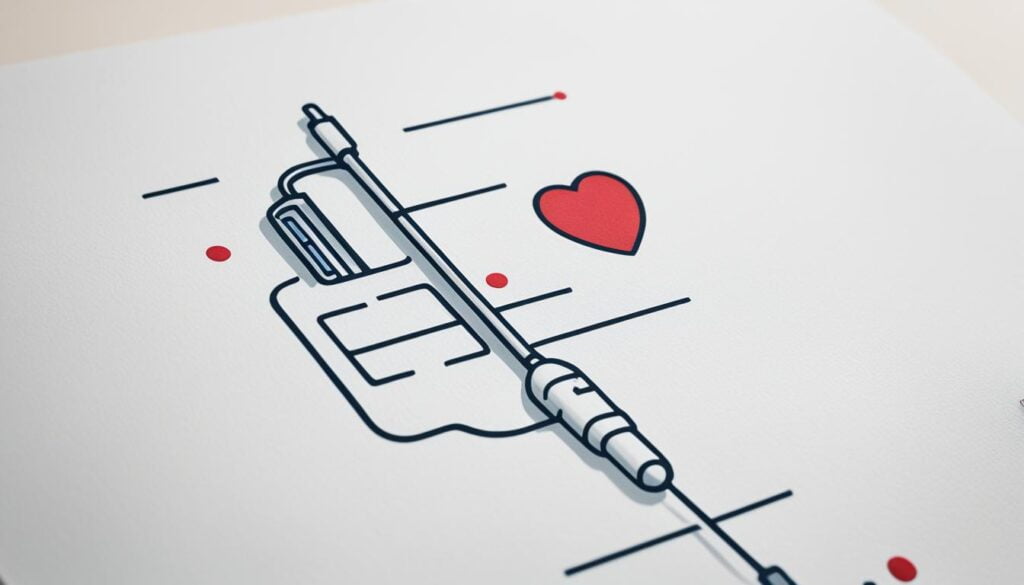
Some diabetics choose to get medical tattoos as a way to convey their diabetes status in case of emergencies. These tattoos serve as a form of identification and inform medical personnel about the individual’s condition, aiding in prompt and appropriate medical care. Medical tattoos often feature the words “type 1 diabetes” or incorporate the blue circle symbol for diabetes awareness.
It is crucial to ensure that the medical tattoo is easily visible and located in an area typically checked by medical staff during emergency situations. Common placements include the inner wrist, forearm, or upper arm. By having a visible medical tattoo, diabetics can enhance their safety and reduce the risk of misdiagnosis or delayed treatment.
| Benefits of Medical Tattoos for Diabetics |
|---|
| Immediate Identification |
| Enhanced Safety in Emergencies |
| Reduced Risk of Misdiagnosis |
| Prompt and Appropriate Medical Care |
Medical tattoos can provide peace of mind for both individuals with diabetes and their loved ones. It is important to consult with a reputable tattoo artist who has experience in creating medical tattoos to ensure accurate representation and proper placement. By considering the risks, diabetic tattoo considerations, and the potential benefits of medical tattoos, individuals with diabetes can make an informed decision about acquiring this form of identification.
Conclusion
Diabetics can indeed get tattoos, provided that their blood sugar levels are well-controlled. However, there are certain precautions and considerations to keep in mind. It is crucial to choose a licensed and hygienic tattoo studio to minimize the risk of infections and complications. Additionally, diabetics should avoid areas with poor circulation when selecting a tattoo placement. Monitoring blood sugar levels before, during, and after the tattooing process is essential for optimal healing.
After getting a tattoo, proper aftercare is vital. Diabetics should diligently keep the tattoo clean, following the instructions provided by the tattoo artist. Any signs of infection should be taken seriously, and medical attention should be sought promptly. By managing blood sugar levels carefully and following proper aftercare measures, diabetics can ensure successful healing and minimize the risk of complications.
In some cases, diabetics may also opt for medical tattoos as a way to communicate their diabetes status in emergencies. These tattoos serve as a form of identification and provide important information to medical personnel. It is important to ensure that the medical tattoo is easily visible and located in an area that medical staff typically check during emergency situations.
FAQ
Can diabetics get a tattoo?
What are the risks of getting a tattoo with diabetes?
What should diabetics consider before getting a tattoo?
How to manage blood sugar levels for tattoo healing?
Where should diabetics avoid getting tattoos?
How to select a safe and hygienic tattoo studio for diabetics?
What is the healing process for diabetic tattoos?
Are there medical tattoos for diabetics?
Can diabetics get tattoos if their blood sugar is well-controlled?
Forhad
Forhad's writing is not just about the artistry of tattoos or the latest trends in the industry; it's an exploration of the deep-rooted connections people have with their tattoos, reflecting personal narratives, cultural histories, and moments of transformation. Through a mix of in-depth features, personal narratives, and insightful analyses, he sheds light on the multifaceted nature of tattooing, revealing the emotional and cultural layers that lie beneath the surface.


